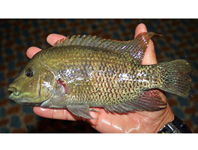Abstract
A new species of Alcyonosyllis (Annelida: Syllidae), A. aidae n.sp. is described from Luzón island, Philippines, associated with the alcyonacean Dendronephthya sp. (Nephthydae). This is the sixth known species of this genus living in the Indo-Pacific region. The new species differs from other Alcyonosyllis in having long and slender cirri with the first pair of dorsal cirri slightly thicker than remaining, bidentate chaetae with distal tooth larger than proximal one, and a distinct colour pattern, with a median longitudinal, slender reddish line, and two wider lateral bands, giving a tri-lineate appearance. A new report of the recently described species, A. hinterkircheri, previously known only from an area close to Bohol, in Philippines, is also included, being the first report of this species in Luzón Island. A new species of the genus Parahaplosyllis Hartmann-Schröder, 1990, is also described. Up to now, only the type species of the genus was known, from New South Wales, Australia; this is the second known species of this genus. It differs from P. brevicirra Hartmann-Schröder, 1990 by having unidentate dorsal simple chaetae (instead of bidentate ones as in P. brevicirra), ventral simple chaeta with shorter and less curved basal spur, more distinctly articulated dorsal cirri, with a long distal article, and a shorter proventricle. Finally, new different types of stolons are described for both genera.

